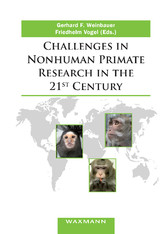Suchen und Finden
Service
Contents
6
Preface
8
Regulatory Standards for the Approval of Biosimilar Products: A Global Review1
10
Barbara Mounho-Zamora
10
Abstract
10
1. Introduction
11
2. History of the development of regulatory pathways for biosimilar products
14
3. Biosimilar pathway in the European Union
16
4. Biosimilar pathway in the United States
21
5. Conclusions
30
6. References
31
Biosimilars and Primate Toxicology – Practical Considerations and Challenges
36
Raymond Donninger
36
Abstract
36
1. Introduction
36
2. Regulations
37
3. Biotherapeutic nonclinical safety development considerations
38
4. Biosimilar nonclinical development considerations
39
5. Primate toxicity studies
41
5.4 Immunogenicity
44
6. Other nonclinical studies
45
7. Overall conclusions
45
8. References
45
Social Housing for Nonhuman Primates: A Global Perspective
48
Jessica Couch, Heather Taylor, Kathryn Chapman
48
Abstract
48
1. Introduction
48
2. Examples of challenges in socialization of adult male NHPs
50
3. Concerns and benefits of social housing for NHPs
52
4. What is the current practice for care of adult NHPs?
53
5. Potential challenges to success of social housing
54
6. Other differences in socialization and enrichment practices between CRO sites
55
7. Summary and conclusions
56
8. Looking forward
57
9. Acknowledgements
57
10. References
58
Considerations for the Use of Nonhuman Primates in Nonclinical Safety Assessment
60
Jörg Bluemel
60
Abstract
60
1. Introduction
60
2. Nonhuman primates in toxicity testing
62
3. Species selection for nonclinical safety studies
63
4. Challenges in the refinement of nonclinical study designs
64
5. Industry survey and retrospective analysis of NHP study designs
66
6. Recommendations for refined / alternative study designs
67
7. Conclusions and outlook
69
8. References
70
Update on Nonhuman Primate Developmental and Reproductive Toxicity Evaluation
72
Gerhard F. Weinbauer
72
Abstract
72
1. Introduction
73
2. Fertility evaluation
73
3. Pre- and postnatal development evaluation
77
4. Implications of social housing for DART evaluation
82
5. References
85
General and Specific Considerations Related to Reproductive and Developmental Toxicity
88
Annick Cauvin, PhD
88
Abstract
88
1. Introduction
88
2. Specificities of antibodies and choice of species for nonclinical evaluation
90
3. Considerations for the design of non-clinical programs
92
4. Specific considerations related to reproductive and developmental toxicity
95
5. Reproductive and developmental assessment of Cimzia®
96
6. Reproductive and developmental assessment of olokizumab
99
7. Summary and conclusion
107
8. References
108
Juvenile Animal Studies and Pediatric Investigation Plans
112
Mette Thomsen
112
Abstract
112
1. Introduction – EU pediatric regulation
112
2. The Pediatric Investigation Plan
113
3. Waiver or PIP?
113
4. Condition/indication for PIP
114
5. When to produce a PIP?
115
6. When to submit a PIP?
115
7. PIPs after approval
116
8. Modification of an agreed PIP
116
9. Compliance check
117
10. How to minimise the number of modifications of the PIP
117
11. Nonclinical Studies to support pediatric trials:
118
12. PIP – Purpose of nonclinical section
119
13. What to include in the PIP
120
14. PDCO nonclinical working group
121
15. EMA’s experience
122
16. Case studies
124
17. Increased number of juvenile animal studies?
125
18. Conclusion
128
19. References
129
Relevance and Importance of Nonhuman Primate Models in Regulatory Toxicology – Guideline Update for Biopharmaceuticals
132
Paul Baldrick
132
Abstract
132
1. Introduction
132
2. Primate use and biological activity/pharmacodynamics, safety pharmacology, exposure assessment
133
3. Primate use and single dose toxicity, repeat dose toxicity and immunotoxicity
135
4. Primate use and reproductive performance/development toxicity, genotoxicity, carcinogenicity and local tolerance
141
5. Primate use and other areas of toxicological testing
143
6. Overall conclusions
145
7. References
146
Nonclinical Safety Assessment of Next Generation Biologicals: Nanobodies ®
150
Sandy Jacobs, Sandra De Boever, Marie-Paule Bouche, Maria Laura Sargentini- Maier, Hans Ulrichts, Josefi ne- Beate Holz, Judith Baumeister
150
Abstract
150
1. Introduction: the Nanobody technology platform
151
2. The unique properties of Nanobodies and their implications on safety and toxicity testing
152
3. Case study 1: the anti-vWF Nanobody caplacizumab
155
4. Case study 2: ALX-0141
161
5. Overall conclusions
166
6. References
166
Acknowledgements
167
19th Covance Primate Symposium – Closing Thoughts
168
Meredith Rocca
168
Biosimilars Development
168
Animal Use and Welfare
169
Nonhuman Primate DART and Juvenile Evaluation
170
Nanobodies
171
Safety Pharmacology
171
Take Action!
171
Speakers and Chairpersons
172
NINETEENTH PRIMATE SYMPOSIUM
174
Index
178
Alle Preise verstehen sich inklusive der gesetzlichen MwSt.










